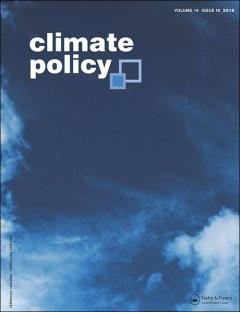
The Paris Agreement establishes an international covenant to reduce emissions in line with holding the increase in temperature to "well below 2°C … and to pursue … 1.5°C." Global modelling studies have repeatedly concluded that such commitments can be delivered through technocratic adjustments to contemporary society, principally price mechanisms driving technical change. However, as emissions have continued to rise, so these models have come to increasingly rely on the extensive deployment of highly speculative negative emissions technologies (NETs). Moreover, in determining the mitigation challenges for industrialised nations, scant regard is paid to the language and spirit of equity enshrined in the Paris Agreement.
If, instead, the mitigation agenda of ‘developed country Parties’ is determined without reliance on planetary scale NETs and with genuine regard for equity and ‘common but differentiated responsibilities and respective capabilities’, the necessary rates of mitigation increase markedly. This is evident even when considering the UK and Sweden, two nations at the forefront of developing ‘progressive’ climate change legislation and with clear emissions pathways and/or quantitative carbon budgets. In both cases, the carbon budgets underpinning mitigation policy are halved, the immediate mitigation rate is increased to over 10 percent per annum, and the time to deliver a fully decarbonised energy system is brought forward to 2035-40. Such a challenging mitigation agenda implies profound changes to many facets of industrialised economies.
- Without a belief in the successful deployment of planetary scale negative emissions technologies, double-digit annual mitigation rates are required of developed countries, from 2020, if they are to align their policies with the Paris Agreement’s temperature commitments and principles of equity.
- Paris-compliant carbon budgets for developed countries imply full decarbonisation of energy by 2035-40, necessitating a scale of change in physical infrastructure reminiscent of the post-Second World War Marshall Plan. This brings issues of values, measures of prosperity, and socio-economic inequality to the fore.
- The stringency of Paris-compliant pathways severely limits the opportunity for inter-sectoral emissions trading. Consequently aviation, as with all sectors, will need to identify policies to reduce emissions to zero, directly or through the use of zero carbon fuels.
- The UK and Swedish governments’ emissions pathways imply a carbon budget of at least a factor of two greater than their fair contribution to delivering on the Paris Agreement’s 1.5-2°C commitment.
